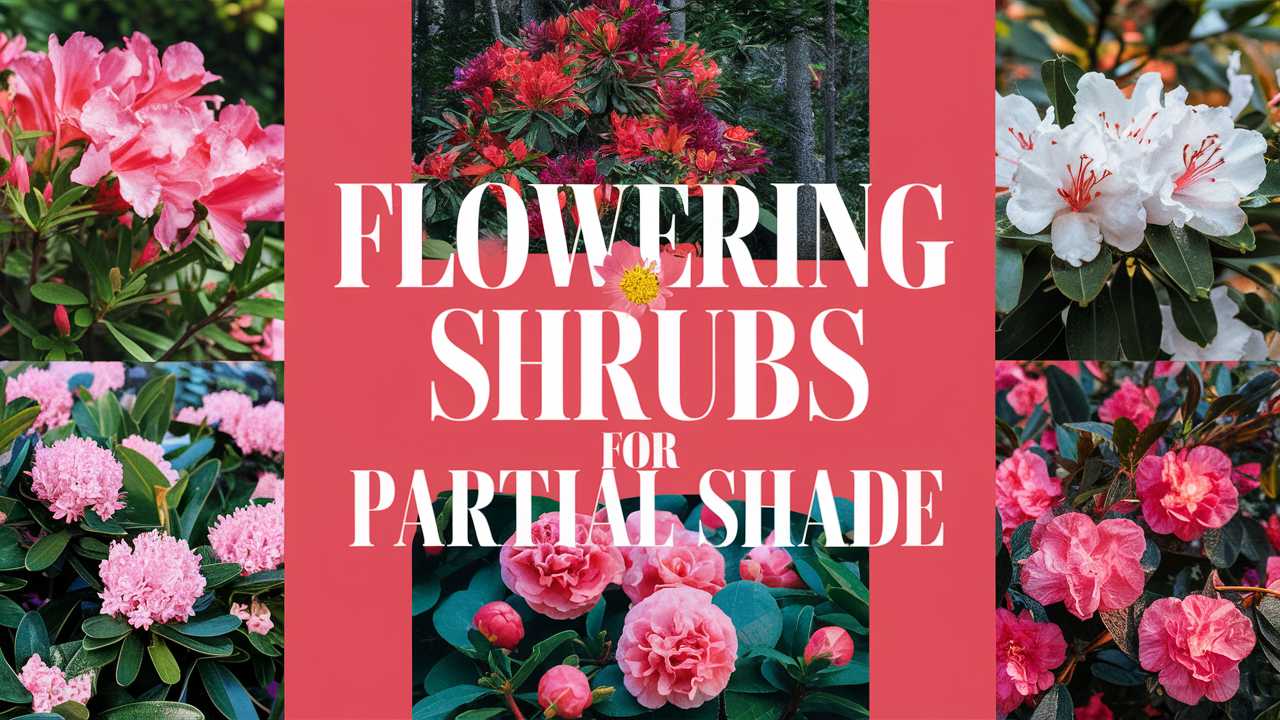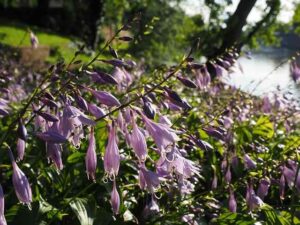Working with shaded areas doesn’t mean settling for dull foliage or sparse blooms; instead, it creates an opportunity to explore various flowering shrubs that thrive in these conditions. This guide will explore an array of unique shrubs that will thrive in partial shade, all while providing that essential burst of color and charm to your landscape.
Oakleaf Hydrangea (Hydrangea quercifolia)
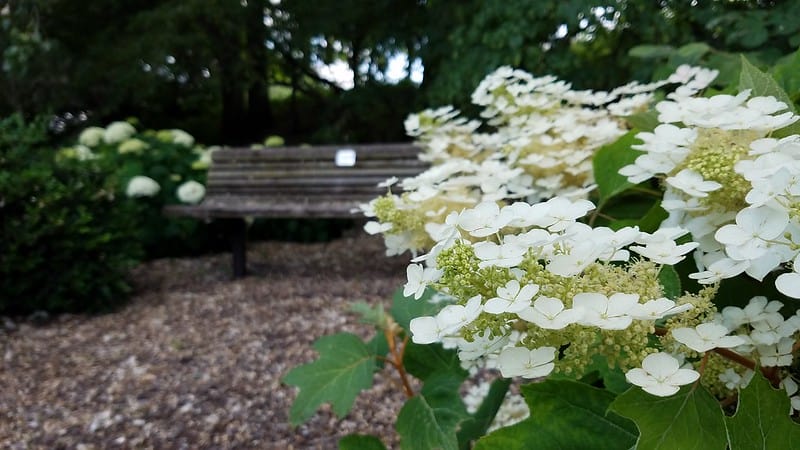
The Oakleaf Hydrangea is a stunning addition to any garden, especially in those shadier corners where sunlight wanes. Native to the southeastern United States, this shrub is known for its striking, lobed leaves that resemble those of the oak tree. In bloom, you will be captivated by its large, conical clusters of white flowers, which gradually turn to a rich, rosy pink as they age.
One of the standout features of the Oakleaf Hydrangea is its spectacular fall color. As the days shorten, the foliage transforms into shades of deep burgundy and copper, creating an attractive multi-season interest. This plant typically grows between 4 to 6 feet tall and can spread similarly wide, making it ideal for hedges or as an accent specimen. It prefers moist, well-drained soil but is known to tolerate drought once established. With moderate maintenance requirements, the Oakleaf Hydrangea is sure to become a focal point in the landscape.
Japanese Skimmia (Skimmia japonica)
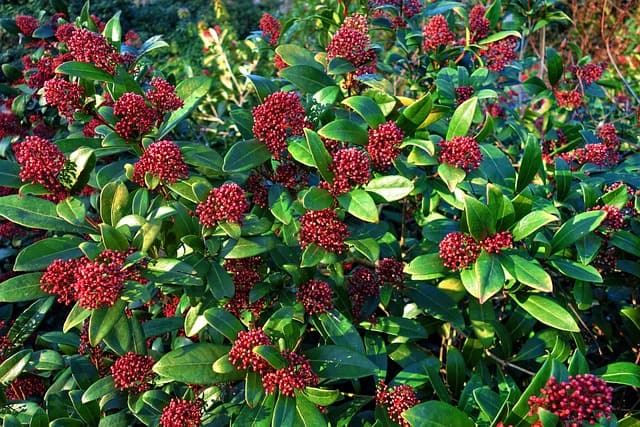
The Japanese Skimmia is a versatile evergreen shrub that adds a touch of elegance to shady areas. This compact shrub is native to Japan and has shiny, dark green leaves that serve as a perfect backdrop for its fragrant, white or pink flower clusters that appear in spring. What makes Skimmia particularly intriguing is its dioecious nature—meaning male and female flowers are on separate plants. For berries to develop, both male and female plants need to be present.
Though it flourishes in partial shade, Skimmia is remarkably adaptable and can tolerate a range of conditions, from acidic to alkaline soils. It typically reaches heights of 2 to 4 feet, making it suitable for low hedges or borders. Its slow growth rate keeps it manageable, and its resilience ensures it can be a lasting addition to your garden. In the right conditions, the berries that follow flowering can provide further visual interest and a food source for birds in winter.
Virginia Sweetspire (Itea virginica)
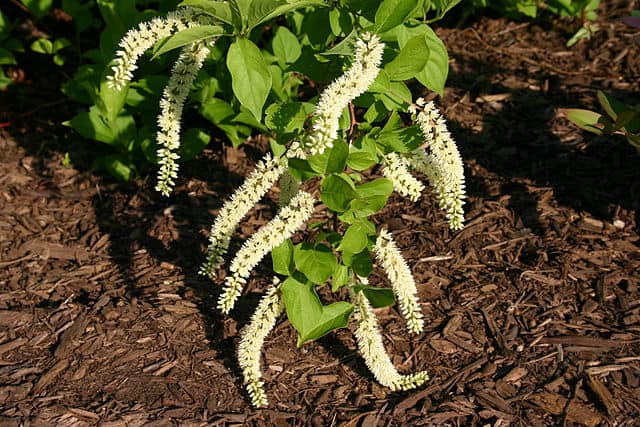
Virginia Sweetspire is a delightful native shrub that thrives in the filtered sunlight found under trees or next to structures. This deciduous shrub produces showy, fragrant flower spikes in late spring through early summer, with delicate white flowers adorning the branches. Its drooping form gives it a graceful appearance in the landscape.
As the season progresses, the foliage transforms into vibrant hues of orange and red in the fall, so your garden is colorful throughout the year. This shrub is particularly well-suited to moist soils, making it perfect for rain gardens. Virginia Sweetspire generally grows to be 3 to 5 feet tall, and its spreading habit can create a lovely ground cover effect in shaded areas. With minimal pruning and care, this shrub can provide sustained beauty year after year.
Japanese Aralia (Fatsia japonica)

If you’re looking for a shrub that makes a bold statement, the Japanese Aralia might just fit the bill. This evergreen shrub is visually striking, with large, glossy leaves that can measure up to a foot wide. It lends a tropical flair to your garden, growing between 4 to 10 feet tall depending on the environment it’s placed in.
The Japanese Aralia produces small clusters of white flowers in the fall, which are followed by black berries that attract birds and provide texture in the winter months. It thrives in partial to full shade, preferring moist, well-drained soils that are rich in organic material. Although it’s relatively low-maintenance, occasional pruning can help maintain its shape and encourage healthy growth. Its lush foliage works beautifully as a backdrop for flowering plants, creating layers of interest in your garden sanctuary.
Bottlebrush Buckeye (Aesculus parviflora)
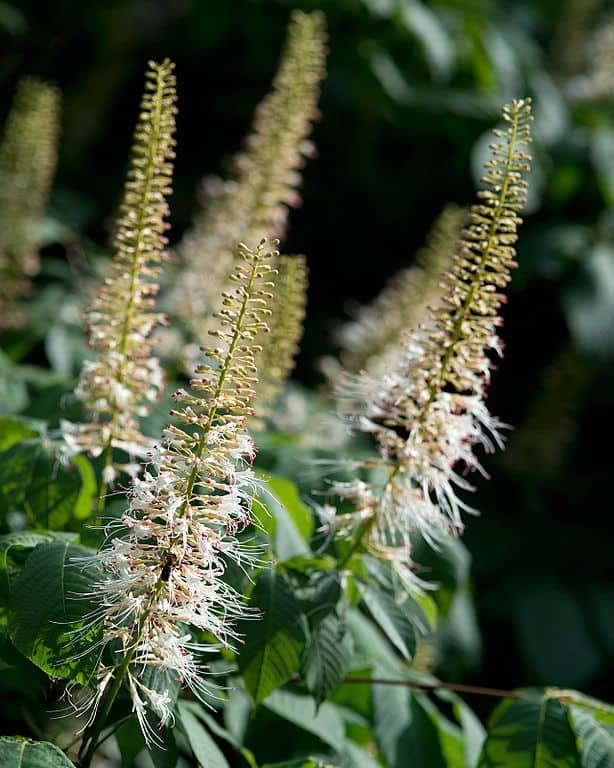
Bottlebrush Buckeye is a unique shrub that will surprise anyone who encounters its striking candle-like flower spikes in early summer. A native to the southeastern United States, this deciduous shrub can reach a height of 6 to 10 feet, making it an impressive feature in the landscape. The flowers, resembling a bottlebrush, emerge in creamy white spikes that can draw in pollinators with their sweet scent.
The lush, palmately compound leaves provide significant coverage and create an appealing shade in warm months before turning a lovely golden yellow in fall. Bottlebrush Buckeye prefers partial shade, particularly in hot-climate areas, and thrives in rich, well-drained soils. It’s a great option for naturalizing in a woodland garden setting, where its spreading habit can take center stage without demanding excessive maintenance.
Slender Deutzia (Deutzia gracilis)
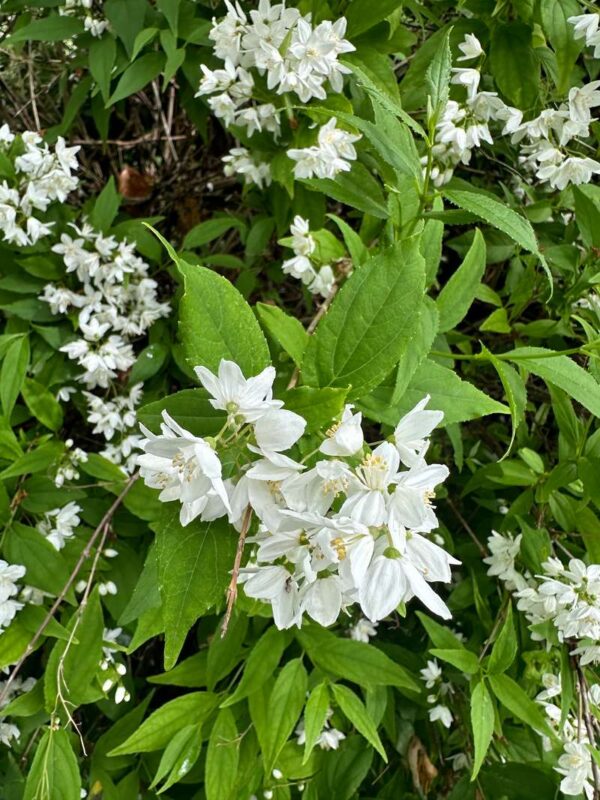
For those looking to blend elegance with ease, the Slender Deutzia is an excellent choice for a partially shady garden. This deciduous shrub typically grows to around 3-4 feet tall and features arching branches laden with fluffy clusters of white flowers in late spring, which can dulcetly turn to soft pink as they mature.
The delicate petals often attract pollinators, filling your space with their gentle hum while brightening the understory of your garden. Its fine-textured foliage complements more robust plants and is durable, making it a lovely choice for borders or small garden spaces. Slender Deutzia thrives in well-drained soils, and minimal pruning is needed to maintain its natural form, making it an ideal low-maintenance option.
Cherry Laurel (Prunus laurocerasus)
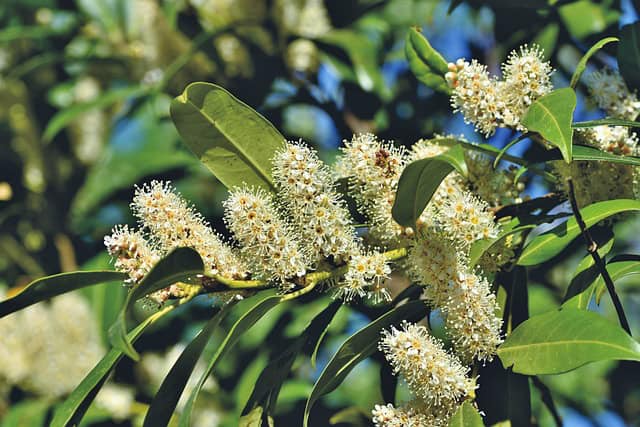
Cherry Laurel, also known as English Laurel, is a versatile evergreen shrub that provides an effective backdrop in partial shade. Its glossy, dark green leaves offer an abundance of visual appeal year-round. This plant can grow to heights of 3 to 10 feet, making it suitable for hedges—not to mention its ability to act as a sound barrier or privacy screen.
In spring, it bears racemes of fragrant white flowers that attract pollinators, particularly bees. Once the flowers have faded, the berries that appear can add a touch of interest—though it is essential to note that they are toxic if ingested by pets or humans. Cherry Laurel prefers moderate moisture levels but allows for poor soil conditions, making it highly adaptable to various settings. With little maintenance required, it’s perfect for busy gardeners looking for long-lasting beauty.
Hydrangea (Hydrangea macrophylla)
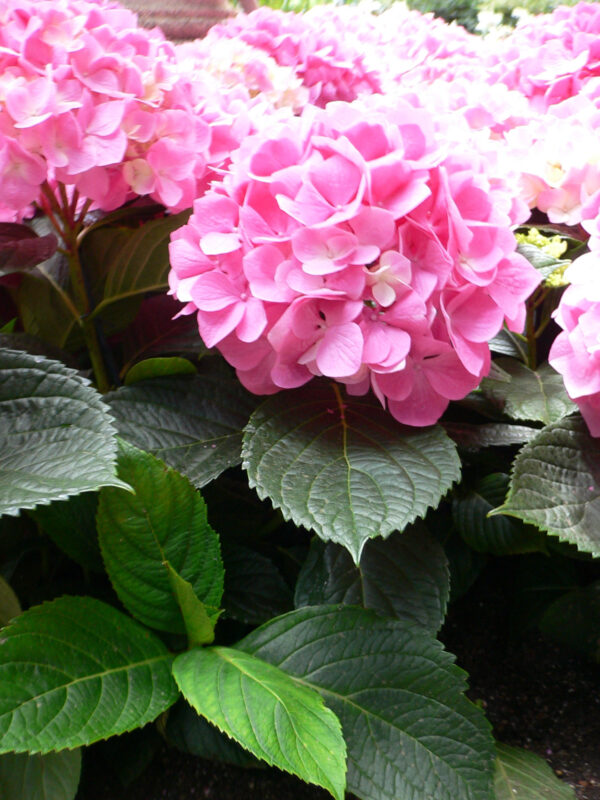
Hydrangeas might just be the quintessential flowering shrub for shady gardens. The bigleaf Hydrangea, or Hydrangea macrophylla, is adored for its massive clusters of blooms that can be found in colors ranging from blue to pink, depending on the acidic quality of the soil. This shrub can grow from 3 to 6 feet tall, depending on the variety, and thrives in partial shade with afternoon sun.
One of the joys of growing Hydrangeas lies in their diverse forms, from mophead to lacecap varieties. In the late spring and summer, the blooms can transform your garden, offering a fantastic visual display. The foliage is equally stunning, providing a lush green backdrop that brings life to shaded spots. However, they require consistent moisture and protection from harsh sunlight, particularly in hot climates. With some thoughtful care, your Hydrangeas will bloom year after year, drawing compliments from anyone who visits.
Fuchsia
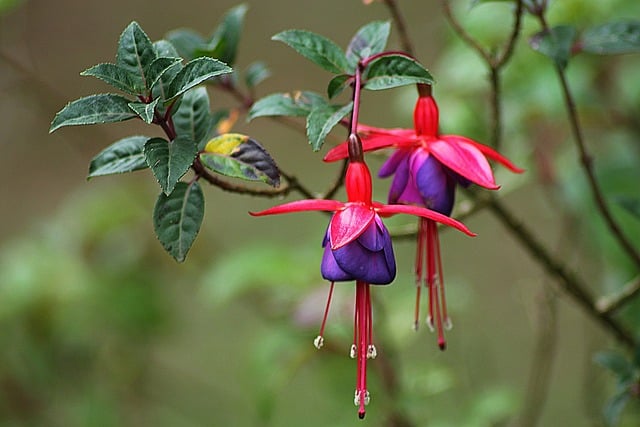
Fuchsia is a fabulous flowering shrub that adds a splash of color to partial shade areas. Known for their exquisite pendant-shaped flowers that appear throughout the summer, Fuchsias offer a variety of colors—from deep purples to vivid pinks and whites. Their cascading growth habit makes them particularly enchanting in hanging baskets or as underplantings beneath taller shrubs.
This shrub thrives in cool, moist, and well-drained soils, making it perfect for areas that don’t receive full sunlight. Fuchsias generally remain compact, usually reaching heights of 1 to 3 feet, which makes them versatile for garden beds or borders. Regular pruning after flowering helps maintain their shape while encouraging new blooms for the following season. Whether planted as an accent or in mass, Fuchsia brings a whimsical charm to shaded spaces.
Tree Peony (Paeonia suffruticosa)

Tree Peonies are cherished for their stately presence and impressive blooms. These robust shrubs can reach heights of 3 to 6 feet, exhibiting large, fragrant flowers in a variety of colors, including soft pinks, whites, and even deep reds. Flowering in the spring, tree peonies bring a fleeting but breathtaking spectacle to your garden, often lasting longer than their herbaceous counterparts.
While Tree Peonies appreciate full sun, they also thrive in partial shade, particularly in regions with hot summers. Their lush, lobed leaves add significant textural interest throughout the growing season. With well-drained, fertile soil, these shrubs can flourish with minimal maintenance, requiring occasional pruning to remove spent blooms. Their striking blooms and unique foliage ensure that Tree Peonies will stand out in any garden.
Glossy Abelia (Abelia x grandiflora)
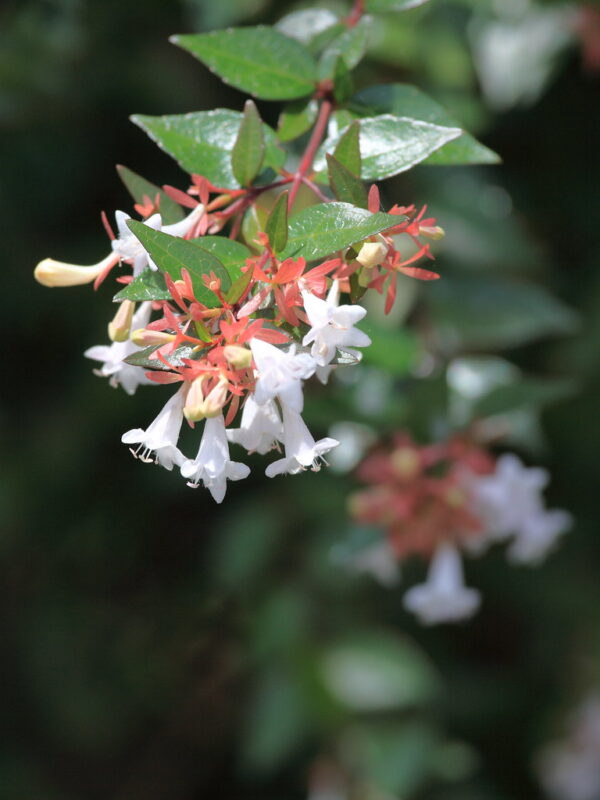
For a lush and fragrant addition to your partial shade garden, consider the Glossy Abelia. This semi-evergreen shrub can grow anywhere from 3 to 6 feet, offering an abundance of glossy leaves that remain vibrant year-round. Its delicate white to pink tubular flowers bloom from late spring through fall, creating a hummingbird paradise with their sweet nectar.
Glossy Abelia is adaptable to various soil types and thrives with minimal care, making it a perfect choice for the busy gardener. The shrub’s natural growth habit is quite appealing, but occasional pruning can enhance its shape and promote more dense foliage. When planted in partial shade, it will still produce an impressive array of blooms, ensuring your garden is lively and colorful even in lesser-lit spots.
Camellia
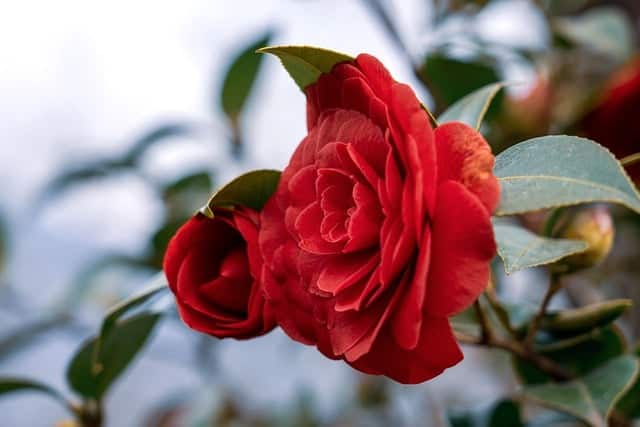
Camellia shrubs, with their lush foliage and exquisite flowers, are prized for their ability to bring beauty to shaded areas. These evergreen shrubs typically bloom in winter or early spring, showcasing large, stunning flowers in shades of white, pink, or red, often with stunning double or semi-double petals.
Camellias prefer acidic soils and thrive in partial shade, making them perfectly suited for woodland gardens. Depending on the variety, these shrubs can grow between 2 to 20 feet tall. Regular watering is crucial, especially during dry spells, but once established, they require minimal maintenance. With their evergreen leaves providing year-round interest, Camellias are a classic choice for anyone looking to brighten up a shadier part of their yard.
Garland Flower (Daphne cneorum)
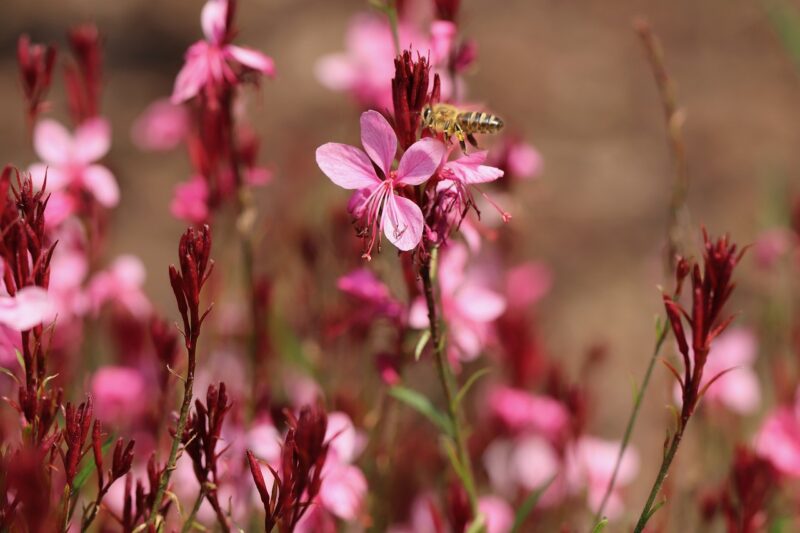
Garland Flower, or Daphne cneorum, is another enchanting shrub that excels in partial shade settings. This charming evergreen rarely exceeds two feet in height, making it perfect for small garden spaces or as an attractive border plant. In spring, it bursts into a profusion of small, fragrant pink flowers that embody elegance, attracting pollinators while delighting passersby with their lovely scent.
The fine-textured, leathery leaves enhance its appeal throughout the growing season. However, it’s essential to provide well-drained soil and to avoid overwatering, as Daphne can be sensitive to excess moisture. With proper care, this shrub can thrive and provide long-lasting beauty and fragrance, even in more challenging garden spots.
Azalea
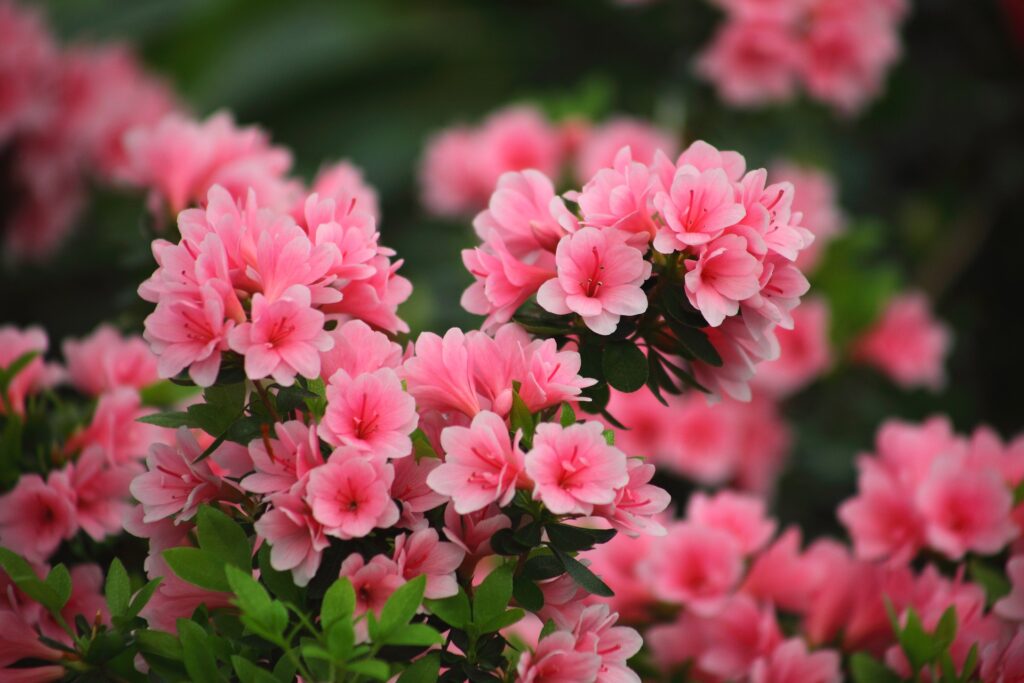
Azaleas are among the most popular flowering shrubs, loved for their bright, trumpet-shaped blooms that appear in late spring. These shrubs are versatile and adapt well to partial shade, making them a go-to choice for areas that receive dappled sunlight. Azaleas come in a stunning array of colors, from soft pastels to vibrant hues, ensuring there’s one to complement any garden palette.
Measuring between 2 to 5 feet tall, Azaleas can be planted in masses for dramatic displays or dotted throughout the landscape for pops of color. They prefer well-drained, acidic soils, and while they may need some care in terms of watering and mulching to retain moisture, their visual rewards are well worth the effort. As lovers of filtered light, they can thrive under trees and near buildings, bringing enchanting blooms to corners often overshadowed.
Rhododendron
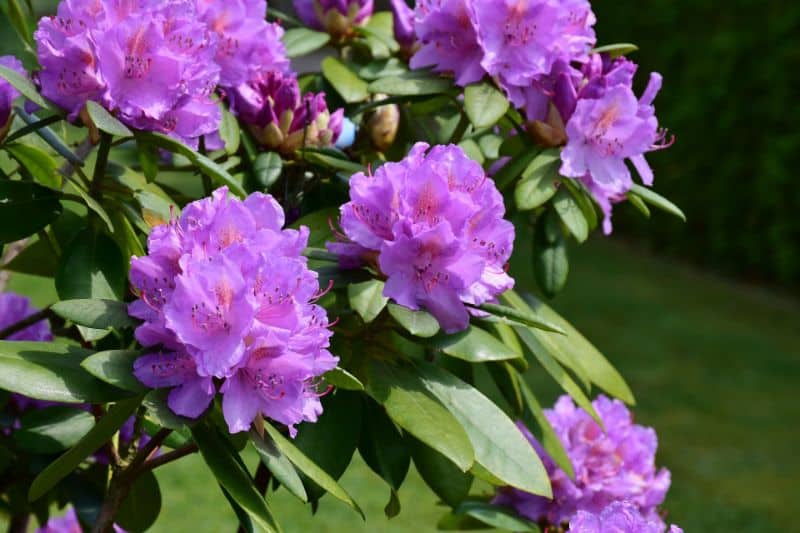
Closely related to Azaleas, Rhododendrons offer an equally stunning addition to shaded gardens. These evergreen shrubs can grow quite large, ranging from 2 to 30 feet, depending on the species, and they are renowned for their large, showy flower clusters that can bloom in singe colors or mesmerizing blends.
Rhododendrons require acidic, well-drained soils, and thrive in partial shade—making them ideal for areas beneath canopy trees or areas that don’t enjoy full sun exposure. With their lush foliage and beautiful blooms, they serve not just as an aesthetic component of your garden but also provide important habitats for local wildlife. Regular pruning helps control their size and encourages healthy growth while ensuring these lovely shrubs remain a focal point of your landscape.
St. John’s Wort (Hypericum densiflorum)
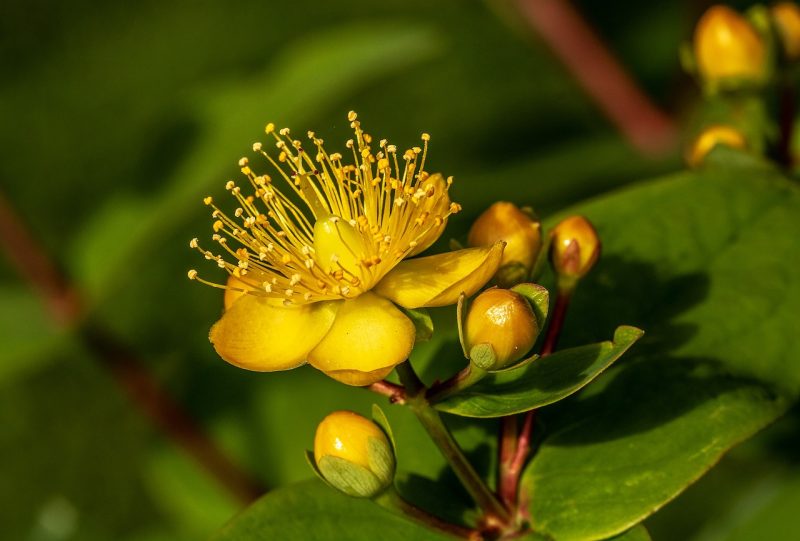
Often overlooked, St. John’s Wort is a resilient shrub that thrives in partial shade, bringing an unexpected flair of color to the landscape. This deciduous shrub produces a profusion of yellow flowers that burst forth throughout the summer, providing both beauty and nectar for pollinators. Typically growing 2 to 4 feet tall, St. John’s Wort can function effectively as ground cover or as supportive plantings in garden borders.
This shrub not only flourishes in less-than-perfect soil conditions but also is relatively tolerant of drought once established. St. John’s Wort’s visual appeal is further complemented by its round, glossy leaves, which turn shades of yellow or orange in the fall. With minimal maintenance required, this little powerhouse offers consistent blooms and hardiness that can fill a partial shade area with life.
Mountain Laurel (Kalmia latifolia)
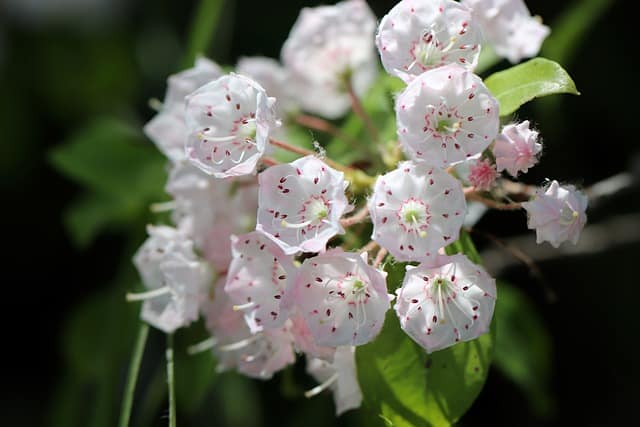
Mountain Laurel, a native to the eastern United States, is known for its beautiful, intricate clusters of flowers that bloom in late spring to early summer. This evergreen shrub typically grows between 4 to 10 feet tall, providing a classic backdrop to any garden while also functioning effectively as a privacy screen.
The unique, waxy leaves and delicate flower clusters often come in shades of pink and white, lending depth and character to shady areas. Mountain Laurel thrives in acidic, well-drained soils and partial shade, making it an excellent choice for woodland gardens. The bloom’s delayed opening often offers a refreshing burst of color after many other spring blooms have faded, ensuring your garden stays captivating for longer.
Japanese Pieris Shrub (Pieris japonica)

Japanese Pieris is a stunning evergreen shrub ideal for partially shaded areas with acidic soils. This versatile shrub typically grows between 3 to 10 feet tall, offering attractive, leathery foliage and captivating clusters of bell-shaped flowers in spring. The blooms are often white or pink, providing a beautiful contrast against the dense, dark green leaves.
During the growing season, the new leaves of Pieris can take on a vibrant red hue, adding yet another layer of beauty to your garden throughout the year. While it appreciates moisture and well-drained soil, it’s also relatively resistant to pests and diseases. Occasional pruning helps to maintain size and encourage healthy growth, allowing you to enjoy its beauty with minimal effort.
Japanese Mahonia (Mahonia japonica)
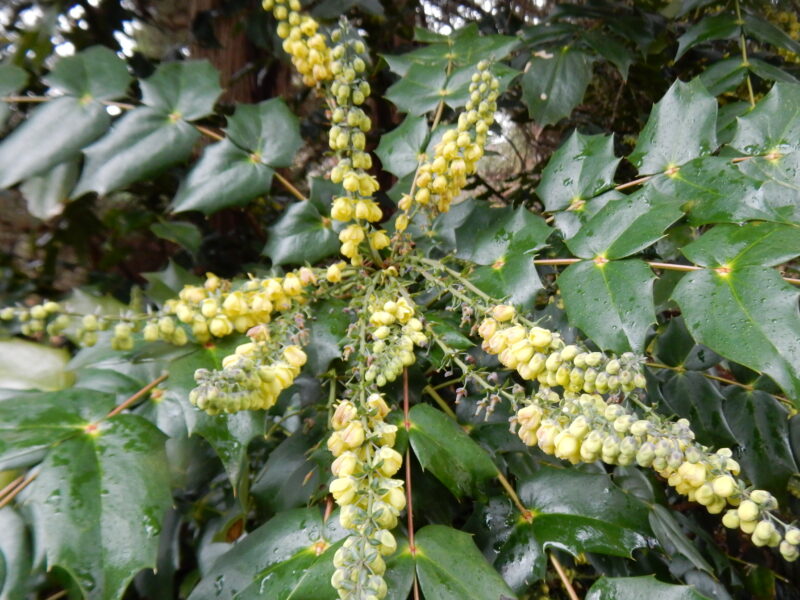
Japanese Mahonia, with its striking, spiny leaves and bright yellow flowers, presents a unique option for shaded gardens. This evergreen shrub can reach heights of 5 to 10 feet, making it an extraordinary statement piece. Its clusters of yellow, fragrant flowers bloom in late winter to early spring, providing essential nourishment to early pollinators when few other sources are available.
Mahonia prefers well-drained soils and partial shade, and its glossy foliage can add significant visual interest year-round. Make sure to observe its natural spacing and growth habit; while it is quite low-maintenance, some careful pruning can stimulate its growth and keep it healthy. With its ability to thrive in challenging conditions, the Japanese Mahonia can be a striking foundation plant or a sentinel at the garden’s edge.
Oregon Grape Holly (Mahonia aquifolium)
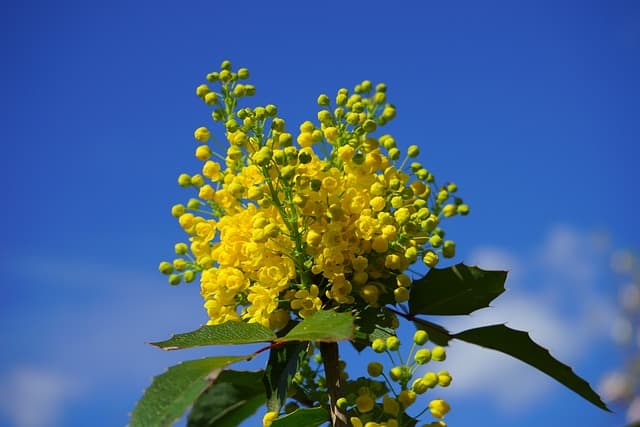
Oregon Grape Holly is the state flower of Oregon and is a remarkable evergreen shrub that can thrive beautifully in shaded areas. This hardy plant can grow between 3 and 10 feet tall, depending on the environment, and is characterized by its unique spiny leaves and yellow blooms that emerge in clusters during late winter.
The dark blue grapes that follow in summer provide not only a visual treat but also a food source for birds, adding another layer of interest to your garden. Its ability to tolerate poor soil and drought conditions makes it a versatile choice for gardeners looking to fill shaded spaces effortlessly. Oregon Grape Holly is relatively low-maintenance and, with the right care, continues to offer beauty and ecological benefits year after year.
Witch Hazel (Hamamelis spp.)
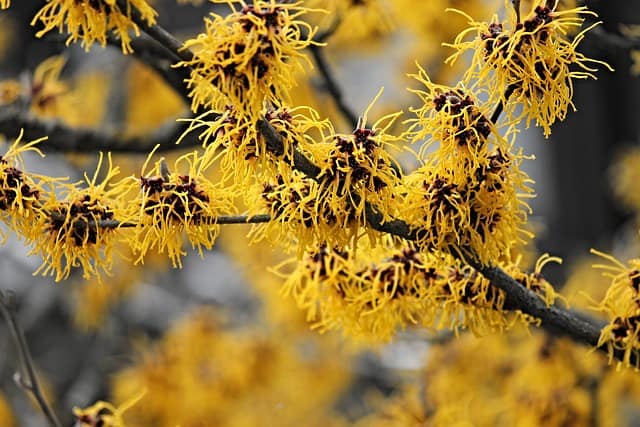
Witch Hazel is a remarkable shrub that lends distinctive beauty to shady gardens while providing winter interest. Known for its unique and fragrant blooms that occur in late winter or early spring, Witch Hazel features ribbon-like petals in shades of yellow, orange, or red.
Growing between 10 to 20 feet, its irregular, spreading form can be both a statement piece and an attractive backdrop for lower-growing perennials. This deciduous shrub prefers partial shade and moist, well-drained soil, making it an excellent choice for woodland gardens. Witch Hazel is also celebrated for its utility; the plant’s bark produces a natural astringent that has been used in medicinal practices. Its beautiful flowers and ecological contributions make it a rewarding choice for a variety of outdoor spaces.
Viburnum
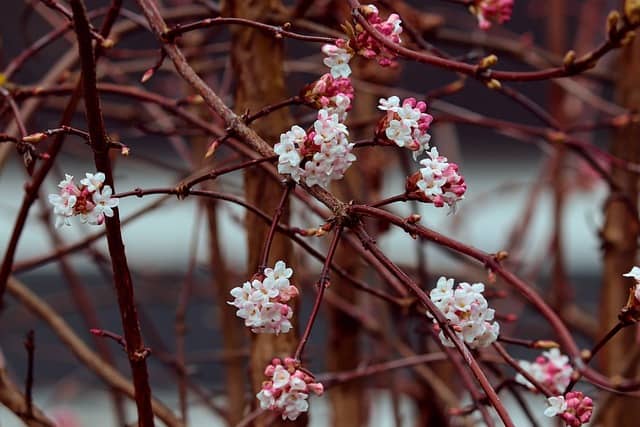
Viburnum is a diverse genus of flowering shrubs that embody versatility, making them a staple for shaded gardens. With over 150 species, you can find varieties that bloom in white, pink, or even blue, bringing unmatched diversity to your garden. Most Viburnums thrive in partial shade and enjoy well-drained soil, allowing gardeners to find a suitable variety for nearly every location.
Depending on the species, Viburnums can grow from 3 to 20 feet tall, making them adaptable for hedges, borders, or specimen plantings. Many produce clusters of attractive berries that feed birds and other wildlife in the fall. Plus, Viburnums are relatively pest and disease-resistant, making them an excellent low-maintenance option. With a little research, you can select a Viburnum variety that aligns with your aesthetic preferences and garden conditions, providing blooms, berries, and beautiful foliage for years to come.


